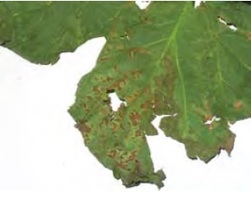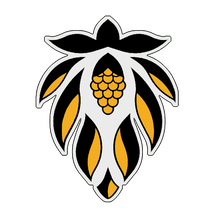|
Downy mildew (DM) of hops is a major disease that affects many susceptible cultivars of hops. It can severely damage both the hop plant as well as making the cones unsuitable for harvest. This discussion pertains to using post harvest DM controls to help hopyards recover from a season of high downy mildew infection. Many hop growers do not understand the importance of controlling downy mildew in their hop yard after harvest is completed. The fungus and the infection are not as visible as springtime symptoms. Many growers consider the season as finished at harvest and leave the yard unattended going into winter. This is a fundamental mistake in controlling DM in infected hopyards. Downy mildew is active whenever conditions permit – it simply doesn't care if it is springtime, summer, or fall. If green plant tissue, moisture and the right temperatures are present, DM will remain active. Post-harvest fungicide applications and controls can be an effective way to manage downy mildew in yards that have had the disease present and reduce the severity of downy mildew spikes that emerge during the following spring growing season.  leaf lesions caused by downy mildew. (D. H. Gent) leaf lesions caused by downy mildew. (D. H. Gent) Downy mildew, like most molds and mildews, persists and spreads during the growing season mainly through air-borne spores which infect new leaves and growth whenever environmental conditions are favorable. In the Fall season, however, downy mildew “morphs” into a different creature; producing a specialized motile spore type called a zoospore. This spore acts much more like a living microscopic worm than a fungal spore. The motile zoospore form helps downy mildew complete its annual life cycle by finding a safe resting place for it to overwinter or by forming protective dormant oospores. These forms of DM exist outside of the plant in the soil where it is outside its host and can be interrupted at this point. As the hop and tree leaves color up and drop into the fall season; an alternate motile zoospore form develops and actively “swims” through wet saturated soil, very much like a nematode, searching for new hop roots and rhizomes to infect. Most of this activity occurs in the top 3 or 4 inches of topsoil. Upon contact with hop roots or rhizomes, the zoospore penetrates into the hop tissue and travels upward through the plant tissues to the newly-forming crown buds. There it will persist and go dormant for the winter. When springtime arrives and the buds loosen, DM returns to an active state; emerging with the first flush of hop growth as white spore-laden shoots; starting another seasonal cycle of aerial downy mildew infection. A weak link and the point where downy mildew is susceptible to Fall controls is when its zoospores are present and active in the soil. This DM phase occurs roughly from after cone harvest until all top foliage growth has yellowed on the the cut bines into late Fall. This phase also coincides with the hops forming the new crown buds during September through October. Keeping the hop plant protected from re-infection during this time period results in lower levels of emerging infected spikes next spring. What Controls are Effective?
A Suggested Fall Program for Downy Mildew Control
Application timing is critical for this to work!! - the longer the hops are exposed in the Fall to wet, saturated / compacted soil conditions the higher the level of disease to expect the following spring. If fields are too wet to cultivate, then at the minimum get the fungicides applied as partial protection.
* Tanos fungicide is a curative SYSTEMIC fungicide that will absorb into the hop plant and kill downy mildew mycelia inside the leaves and stems and stops sporulation. (Pristine or Presido can substitute.) Notes: Don’t procrastinate with the fungicide application! If the zoospore is successful in making it to the crown bud... game over. Nothing can touch it until Springtime when it emerges from dormancy. Fungicides have to be applied before the plants are dormant or they will not take up and translocate the fungicide. ORGANIC GROWER? Your best controls are the use of clean row cultivation and sanitation, good soil aeration, and drench application of organic bio-controls like Serenade and Sonata. Grass aisles can increase the severity of downy in your yards by about 30%, according to research done out west. Organic growers should also minimize their risks by avoiding planting hop varieties with known low resistance to downy mildew. Some cultivars to avoid would be the Columbus, Zeus, Centennial, Cashmere, Horizon, Sterling, & Glacier. English hops, or crosses with them, seem to have the best natural resistance to downy mildew. Further Reading: Hops Handbook, pg.10 Control of Downy Mildew of Hops (WSU) Originally posted 09/15/2013. Updated 09/13/2014 |
Details
Blog AuthorLynn, the head hop grower at Great Lakes Hops has over 30 years of experience in the horticultural field. Browse the blog articles here to find useful growing information for humulus lupulus, based on personal experience and observations at Great Lakes Hops. Archives
January 2020
Categories
All
|


 RSS Feed
RSS Feed